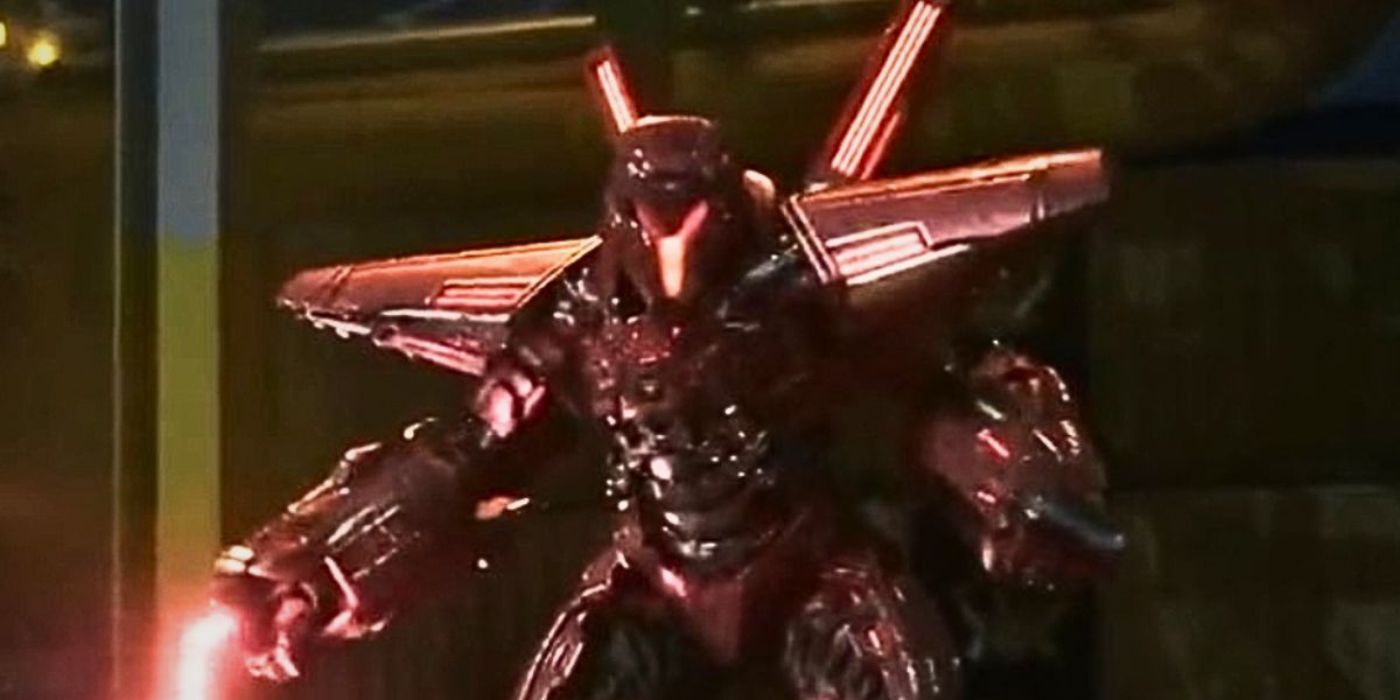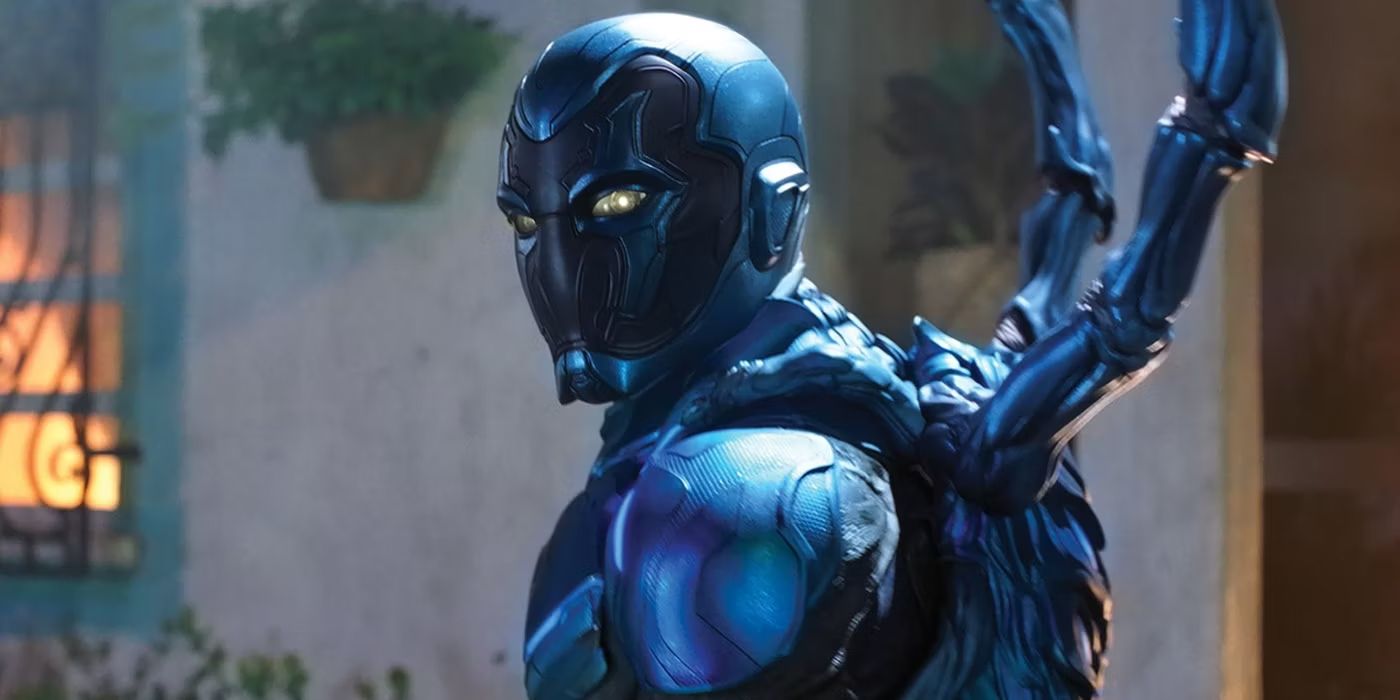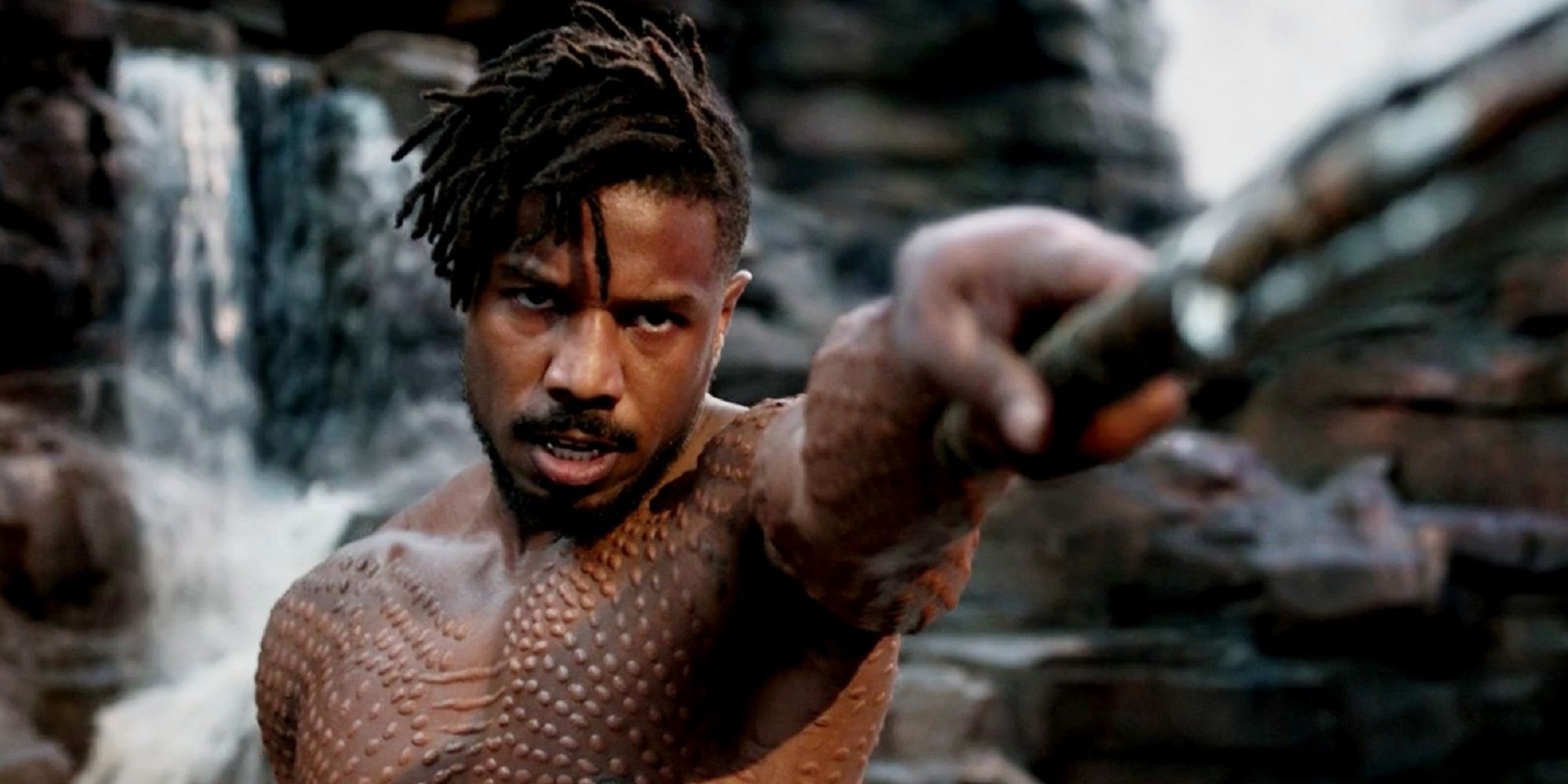The Big Picture
- Recent superhero projects often fail to develop their antagonists with the same depth and nuance as Killmonger in Black Panther, leaving viewers longing for more compelling villains.
- Blue Beetle breaks the mold by giving Ignacio Carapax a sympathetic backstory and motivation, highlighting his vulnerabilities and exploring the consequences of his actions.
- Unlike other Killmonger imitators, Carapax is offered redemption and the opportunity to become a hero, providing a cathartic and unexpected conclusion to the film. Marvel and DC can learn from this success in developing complex and surprising antagonists.
As part of Hollywood’s love for mimicking whatever worked before, Blue Beetle features yet another entry in the recent superhero movie/TV show trend of using tormented villains whose motivations are especially sympathetic and tragic. Such figures are often rooted in having grievances with institutions and powerful figures, making them underdog antagonists rather than all-powerful forces of evil like Darth Vader. Thanks to Michael B. Jordan‘s iconic work as Killmonger in Black Panther, it’s become standard for big superhero properties to try their hand at replicating the nuance and drama ingrained into this particular adversary.
Blue Beetle
An alien scarab chooses Jaime Reyes to be its symbiotic host, bestowing the recent college graduate with a suit of armor that’s capable of extraordinary powers, forever changing his destiny as he becomes the superhero known as Blue Beetle.
- Release Date
- August 18, 2023
- Director
- Angel Manuel Soto
- Cast
- Xolo Mariduena, Susan Sarandon, Raoul Max Trujillo, Harvey Guillen, George Lopez, Elpidia Carrillo
- Genres
- Superhero, Action, Adventure
Marvel Studios has certainly gone back to this well multiple times thanks to characters like Gorr the God Butcher in Thor: Love and Thunder, Gravik in Secret Invasion, and Karli Morgenthau in The Falcon and the Winter Soldier. On the surface, Ignacio Carapax (Raoul Max Trujillo) from Blue Beetle appears to be another instance in this long line of recent live-action superhero adversaries. After all, he’s a big, tough guy who is eventually revealed to have been trained to slaughter people at the will of the United States government and under the command of Victoria Kord (Susan Sarandon). However, Blue Beetle ends up taking its sympathetically motivated baddie in much more interesting directions compared to other similar characters in recent superhero fare.
Recent Superhero Projects Tend to Botch Their Antagonists
One underrated aspect of Black Panther’s writing is that the screenplay makes sure to have Nakia (Lupita Nyong’o) express the same views about Wakanda needing to break away from its isolationist status before we learn about Killmonger’s motivation and problems with Wakanda’s most powerful figures. Through this small but important detail, audiences are shown that questioning authority is not what defines Killmonger as a villain. Instead, his abusive attitude towards women and willingness to kill children are what make him the antagonist of the story. That’s the sort of storytelling that so many imitators of Killmonger have, unfortunately, forgotten about.
Subsequent pastiches on this figure have also raised valid points about problems with the status quo and institutional power structures, but there’s nobody else around that’s not bloodthirsty to reaffirm those points. Karli Morgenthau’s willingness to help refugees isn’t mirrored by any of The Falcon and the Winter Soldier’s heroes, who would rather go murder people on foreign soil for the U.S. army. Meanwhile, Thor: Love and Thunder fails to really grapple with Gorr’s hatred for the Gods or offer other less vicious characters a chance to validate his viewpoints. On the contrary, Love and Thunder instead keeps trying to awkwardly make Gorr as despicable as possible, including making him a last-minute misogynist against Natalie Portman’s Jane Foster/Thor. The only mouthpiece for questioning institutional power in this Marvel Studios movie is around simply to provide conflict and an impetus for CG battle scenes.
These kinds of adversaries are cooked up by writers and studio executives as a way to not only try and capture that Killmonger magic, but also to make their superhero films “relevant” to modern audiences. However, making characters conscious of real-world woes could end up indicting the massive conglomerates responsible for big DC and Marvel movies, so they still need to be seen as ham-fisted villains. Failing to walk that tightrope has left a lot of modern superhero media with a bunch of foes who just remind viewers how well-written Killmonger is. Thankfully, Carapax, while not avoiding all the problems associated with these kinds of adversaries, does prove to be a much better example of the modern tragic comic book movie baddie.
Why is Carapax So Compelling in ‘Blue Beetle’?
Ignacio Carapax is the first human being audiences see in the runtime of Blue Beetle. That initial shot depicts him sitting shirtless, with scars and machinery dotting his back. Through this image, director Angel Manuel Soto makes it clear that this character has experienced lots of hardship. Walking around as the bodyguard of Victoria Kord, Carapax is meant to be a physically intimidating figure and a demonstration of the power of technology from Kord Industries, like the OMAC supersuit. However, that image of Carapax’s back makes it clear that this man can bleed and feel pain. There’s a vulnerability to that shot that already suggests a level of visual sympathy towards this character that other Killmonger knock-offs never got.
As Blue Beetle goes on, Kord offhandedly mentions Carapax’s history with The School of the Americas, a line clarifying that his violent nature is entirely due to the teachings of American forces. This moment offers a glimpse into Carapax’s past, though, admittedly, the middle section of Blue Beetle is more interested in using the character as the centerpiece for visually lackluster action sequences. Though Blue Beetle realizes Carapax with more nuance and specificity compared to Gorr the God Butcher, the action movie demands of the superhero film subgenre do leave the character’s more interesting elements on the sidelines for the second act. Even better examples of this archetype can fall prey to standard elements of the subgenre.
The best elements of Carapax as a sympathetic villain come in his final duel with Jaime Reyes/Blue Beetle (Xolo Maridueña), in which the previously kill-adverse superhero is so blind with vengeful rage that he wants to murder his foe. It’s a moment of moral complexity, in which the thought of killing Carapax is explicitly depicted as a bad thing, that was absent from other recent superhero projects. Secret Invasion made the death of Gravik a cheer-worthy moment, while Eternals undercut its message of how precious life is by slaughtering the Deviant known as Kro, who previously harbored resentment towards the all-powerful Eternals. Here in Blue Beetle, Carapax is not only spared by Reyes, but given something many of these Killmonger clones were not offered: redemption.
Many characters of this ilk are killed off to suggest that they’d become so consumed by villainy that there was never hope for redemption. Blue Beetle goes a more interesting route by showing Carapax, who spent his whole life having his existence molded by external American forces, finally taking control of his life. He makes the conscious decision to blow himself up to destroy Victoria Kord’s drone army while also taking this rich lady down with him. A man who’d previously been depicted as just a heavy hitter with a sad backstory gets to end Blue Beetle as a hero who proves instrumental in saving the day. Gorr, Gravik, Morgenthau, they never even got close to being deemed “heroic” in the eyes of the media in which they appeared. In eschewing this trend, Blue Beetle delivers one of its most cathartic and enjoyably unexpected moments.
Marvel and DC Can Learn From Success Stories Like Killmonger and Carapax
What made Killmonger so interesting when he showed up in Black Panther was in part because he felt so unique. The bold creative tendencies underpinning this antagonistic figure have been largely absent from so many other comic book media characters who’ve shown up in the years since that 2018 feature. Instead of being inspired to take risks on other unexpected interpretations of what “villains” could look like, many superhero movies and TV shows have just done hollow rehashes of Killmonger. In the process, several talented actors have had their best assets as performers wasted on boring characters while interesting questions against authority have been drowned out.
Carapax is not an absolutely perfect tragic, sympathetic comic book movie foe, as seen by Blue Beetle’s tendency to reduce the character to a CG stunt double for long stretches of the runtime. However, the best aspects of this figure’s screen time, especially in the finale, offer very clear improvements on other Killmonger-wannabe’s, especially in how Blue Beetle allows Carapax to get concrete redemption. That fantastic touch being so unexpected is a reminder that great comic book adaptation baddies thrive on being unpredictable and surprising. That’s the quality that separates the likes of Killmonger and Carapax from long-forgotten “sympathetic” adversaries like Gravik or Gorr.
Blue Beetle marks the first entry into James Gunn and Peter Safran‘s new DCU, which opened to an international box office of $122 million. While this number might seem high initially, Blue Beetle cost $104 million to make and would need to earn around $300 million to be deemed a financial success, cementing the film as another box office flop for DC — somewhat of a pattern for the company lately.
Blue Beetle is now available to watch on Max in the U.S.
Watch on Max
Source link



